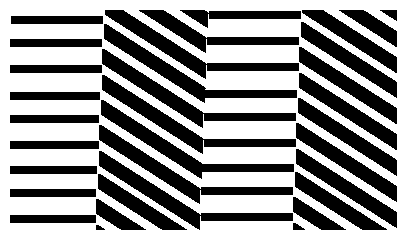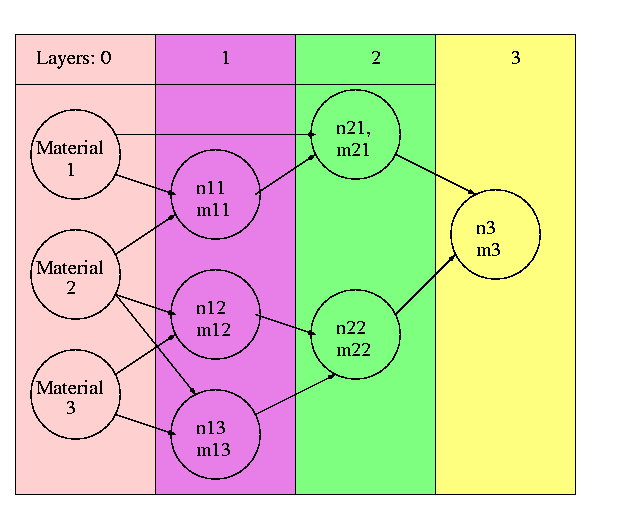We now describe more complicated structures called ``laminates of high rank''. They are defined by an iterative process.
Laminates of second rank
Let us consider a laminate structure as an anisotropic
material with the effective properties tensor
![]() that
depends on the initial material's properties
that
depends on the initial material's properties ![]() and on
structural parameters: the normal
and on
structural parameters: the normal ![]() and the volume fraction
and the volume fraction ![]() of the first material.
of the first material.
Choosing two different sets
 Structure of a second rank laminate
Structure of a second rank laminate
The laminate of second rank is the laminate structure with normal ![]() and fraction
and fraction ![]() made of materials
made of materials ![]() and
and ![]() (see 9):
(see 9):
Laminate of an arbitrary rank By repeating this procedure one can obtain laminates of any rank. The procedure assumes separation of scales: The width of laminates of each succeeding rank is much greater than the width of the previous rank. The obtained composite is considered as a homogeneous effective material at each step.

The tree correspond to a scheme of constructing of a laminate of fourth rank
At the same time, all widths are much smaller than the characteristic
length of the domain and of the scale of variation of exterior forces.
Under these assumptions, it is possible to explicitly calculate the
effective properties of the high-rank laminates. Namely, the laminates of
the ![]() th rank
correspond to the tensors
th rank
correspond to the tensors ![]() determined by
the normal
determined by
the normal ![]() and the concentration
and the concentration ![]() :
:
In dealing with more than two mixing materials, one can add them one by one to the laminate.
Our workshop allows for modeling of these structures
Fields in inner substructures
To calculate the fields in a laminate of a high rank one must first compute
the effective properties
of the substructures that form the composite and find the matrices ![]() . Then one computes the fields using 6. The procedure starts from
the outer layer (of the rank
. Then one computes the fields using 6. The procedure starts from
the outer layer (of the rank ![]() ), and the field
), and the field ![]() and
and ![]() in two
largest layers are linked with the external field
in two
largest layers are linked with the external field ![]() :
:
The special classes of laminates are describe below, in the next section 5